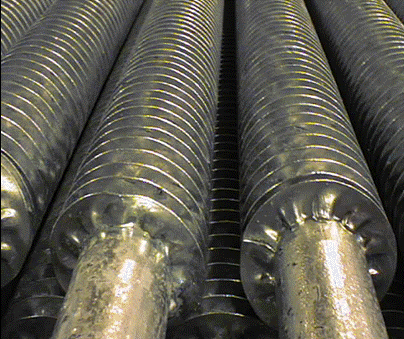Considering Cooling Water when selecting right stainless steel for your coil and heat exchanger
While it's tough to classify the chemical environments to which a heat exchanger might be exposed, evaluation of cooling water (if the exchanger is employed for cooling or condensing) is comparatively easy. Although water varies wide from location to location, tests can be conducted to determine its quality and corrosiveness, and materials can be selected accordingly. Some general observations on totally different cooling water types are worthy of comment.

1.Cooling towers: the employment of spray ponds and cooling towers, which is turning into more and more popular due to water shortages and thermal pollution issues, complicates the cooling water problem because the tendency of those devices is to concentrate impurities like sulfides and chlorides. cooling tower applications are highly successful for both 304 and 316 stainless-steel, especially in the Southwest where ground water provides are scarce, and in some cases with the use of sewage effluent for makeup water.
2.Fresh water. In fresh water as found in virtually all inland locations in the U.S., it can be said that clean stainless-steel heat exchange surfaces resist all kinds of corrosive attack by fresh waters. Exceptions are reported, but investigation discovered that problems were associated with dirty surfaces and could have been prevented. Spotty conditions of fouling and scale may result in localized corrosion of the lower alloyed stainless steels. it's been observed in power plant condensers that fouling occurs in two ways: as a solid continuous coating on the surface, or as small isolated or localized spots. Conditions underneath continuous fouling are usually uniform and not considered serious to stainless-steel in fresh water, whereas spotting or localized fouling will create concentration cells that are potential sites for localized corrosion.
3.Polluted fresh water. stainless steels provide special advantages in handling so-called fresh water contaminated by acid, like resulting from acid mine drain in the monongahela river close to Pittsburgh, Pennsylvania. Tests conducted by utilities in these waters, which have a ph as low as three and contain ferric ions, show that kind 304 stainless steel is totally satisfactory.
4.Clean salt water. 316 stainless steel has been used successfully in sea water for heat exchange service, but only when great care has been taken to keep the metal surfaces clean and freed from fouling deposits. it'd be better to think about the higher alloyed stainless steels, many of which have proven performance. Polluted salt water. Here too, type 316 and particularly the higher alloyed stainless steels, are used. Metal surfaces should be cleaned frequently to eliminate spotty deposits and to improve heat transfer performance.










